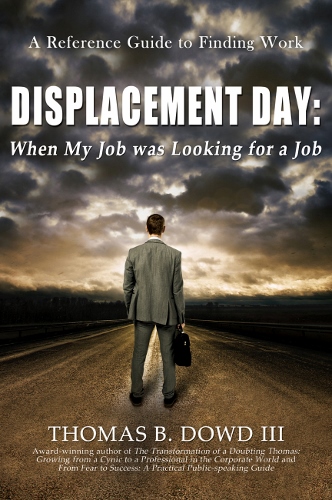


Your professional success and satisfaction are directly linked to your ability to take action on YOURSELF!
***All Speaking, Training, Coaching Programs, and Voiceovers Available as In-person or Remote Sessions***
Credentials:
34 years in banking and customer service
Professionally speaking, training, and coaching since 2011
Over 1,100 coaching, training, speaking, and media events
Membership:
National Speakers Association (NSA)/Global Speakers Association (GSA) (2011-2013)
Toastmasters International (Distinguished Toastmaster, DTM) (2008-present)
Maine Career Development Association (2013-present)
Maine Adult Education Association (2013-present)
Contact Information:
Email: tom@transformationtom.com
It’s time to Unleash YOUR Leadership… and Transformation Tom™ can help you get there!
Who is accountable for maximizing performance: the company or the individual? The answer is both! The impact you have by transforming yourself into who you really want to be professionally will have a significant impact on your own satisfaction and success. As an individual, you will become a prized resource. As a company, you will find that you cannot afford to lose top performers. Whether you are a corporate employer, a stagnant or disengaged employee, or a prospective corporate employee, the program Powerful Professional Transformation: Unleashing Leadership is for you.
Available for:
- Transformational keynote addresses
- Individual coaching
- Group training
- Master of Ceremonies
- Event Announcer
- Voiceover talent
See “My Program” and “Your Training Answers” for more details.
Job-search Strategies: Using techniques that landed me a job in only 59 days after losing a job I held for 23 years, I will give you the motivation and specific tools to significantly increase your chances of landing the job that’s the right match for your skills and passion. The sessions will be individualized to meet your specific needs including interview preparation, networking, transitioning resume information into an interview, job search strategies, or other topics of your choosing.
Resume-writing expert: Blending concepts from my well-received training programs “Making Your Story Come Alive” and “It’s Not Bragging if It’s a Fact,” I use the most updated techniques that grab the attention of hiring managers and successfully run through search engines to recognize what you have to offer.
In what can potentially be a stressful situation when trying to put your professional experience on paper, I make the process easy. Let me do the work for you. With a unique approach to bringing your professional story alive, I have had significant success with differentiating clients from their prospective competitors to significantly increase their chances of landing where they want. I can prepare your resume, and more, at a competitive price: Complete package (invested time to gather information, resume prep, final product, and migration of information into LinkedIn, if desired, and cover letter); a value that will pay off exponentially when you land where you want. As a career development professional, I know how important it is for clients to have their own exceptional story told. Please contact tom@transformationtom.com for details to find the right price point and service that works for your needs.
Author-specific programs available to turn author-driven public speaking events and book readings into transformational events. See “My Program” and “Program Details” for more information.
Voiceover Talent: With over thirteen years as an award-winning professional speaker, I use the spoken voice to emotionally connect with all audiences. I’m the author and voice on the Amazon best-selling audiobook in the Communications and Presentations category, “From Fear to Success: A Practical Public-speaking Guide.” Training through Toastmasters International and the National Speakers Association has taught me the power of voice control, vocal variety, and enunciation that entertains, engages, educates, and instantly connects with a variety of clients to meet the demanding and evolving market. Services include:
☑ Radio and TV Commercials, Advertisements and Promotions
☑ Presentations and Education (including eLearning, Tutorials and Training Courses)
☑ Audiobooks, Podcasts, Narrations, Trailers, and Documentaries
☑ Animations, Video Games, and Apps character voices.
I’m ready to start transforming the world one voice at a time. Reach out to start collaborating today.
ATTENTION MEDIA:
Looking to interview Transformation Tom™ for your blog, podcast, radio, or other media programs? To schedule an interview or media appearance, contact Thomas Dowd using the contact form or email tom@transformationtom.com.
BOOKS:
Down the Chute: A Toboggan Tale What happens when adventurous little girls find a toboggan and a mountain? They learn to overcome fear, build a team, and seek the thrill of the ride.
Released in November 2021. Book available under “Products”. Book and eBook options available on Amazon
Now What? The Ultimate Graduation Gift for Professional Success Now what? You tossed your cap, you gave your hugs, and you’re ready to sprint into the real world. Some may call it the “school of hard knocks.” Your professional success won’t be easily attained. However, you can do more than survive—you can thrive. You can lead a happy, balanced, and successful professional life.
Book available under “Products”. Book and eBook options available on Amazon
The Unofficial Guide to Fatherhood
One of nine contributing authors to discuss what fatherhood means to us. Book available under “Products”. Book and eBook options available on Amazon
Time Management Manifesto: Expert Strategies to Create an Effective Work/Life Balance
Book available under “Products”. Book and eBook options available on Amazon
Award-winning Business Books Available: “Displacement Day: When My Job was Looking for a Job” received Honorable Mention at the 2013 Paris Book Festival in the General Non-Fiction category and Honorable Mention at the 2014 New York Book Festival in the Business category. Book available under “Products”. Book and eBook options available on Amazon
The Transformation of a Doubting Thomas: Growing from a Cynic to a Professional in the Corporate World received Honorable Mention in the Business Category at the 2012 New England Book Festival and From Fear to Success: A Practical Public-speaking Guide received the Gold Medal at the 2013 Axiom Business Book Awards in Business Reference and Honorable Mention at the 2013 Paris Book Festival. See “Products” for more details to purchase. eBook purchase option available on Amazon. MP3 Upload options include: “From Fear to Success” MP3 on CD Baby .







